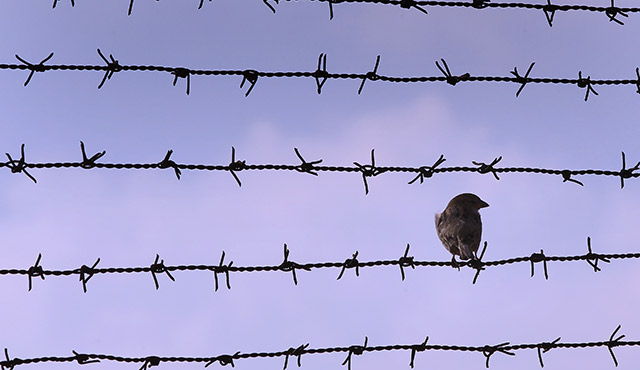In the shadows of the Sierra Nevada in the Owens Valley, lonely in the barren, windblown dust that was once a peach orchard, stands a brilliantly white stone obelisk inscribed with three large Japanese characters. It was designed by a Catholic stonemason and a Buddhist minister and it was constructed by prisoners. It has stood up to more than 70 years of howling winds, bitter winter freezes and scorching summer heat. Nearby are six graves, all that remains of the once mortal presence of more than 10,000 men, women and children who once lived on that land behind barbed wire and under the barrels of guns.
The three characters on the obelisk translate as “Soul consoling tower.” On the opposite side is inscribed, “Erected by the Manzanar Japanese, August 1943.”
The 814 acres near the monument was, during the Second World War, one of 10 camps—euphemistically called “war relocation centers”—that were constructed in remote deserts, plains and swamps in seven states. They were built to house more than 110,000 people, most of whom were native-born or naturalized Japanese Americans. As a result of the fear and xenophobic hysteria that followed the Japanese bombing of Pearl Harbor on Dec. 7, 1941, President Franklin Roosevelt signed Executive Order 9066, which authorized the roundup of anyone of Japanese ancestry who, it was widely suspected, might threaten the war effort.
In the following days, individuals and families were forced to leave behind their homes, farms, businesses and most of their possessions and were shipped off to unknown destinations. Due process of law was abandoned. Nevertheless, many Japanese American internees joined the U.S. military and served gallantly, many with the famous 442nd Regimental Combat Team, the most decorated military unit in American history.
When the war ended and the camps were closed, many internees had nowhere to go, having lost everything in the intervening years. Others struggled to reestablish homes and livelihoods. All carried with them throughout their lives painful memories of years of suspicion and imprisonment by the government to which they remained unswervingly loyal.
The relocation and internment of Japanese Americans during World War II is seen today as one of the most cruel and ill-conceived policies ever put forth by the United States government, and one of the darkest and most shameful episodes in American history.
Former Manzanar internees—many of whom were children at the time—still live and bear witness. Their memories are clear. Unfortunately, the memories of many others are not. It would be gratifying to believe that no one could advance a potential policy of racial or religious exclusion on any level in the United States without automatically triggering general revulsion based largely on the collective cultural memory of Executive Order 9066 and places like Manzanar, but recently that has not been so. There are many in our society today who are willing to trade expediency for imagined safety, dignity for false security and the rule of law and essential humanity for political capital.
The Manzanar monument, designed by Catholic stonemason Ryozo Kado and Buddhist minister Shibjo Nagatomi during an era of fear and disunity, offers a silent parable of cultural and religious understanding and trust for our own contentious time. It is a whisper from an unjust past that we cannot afford to relive.

